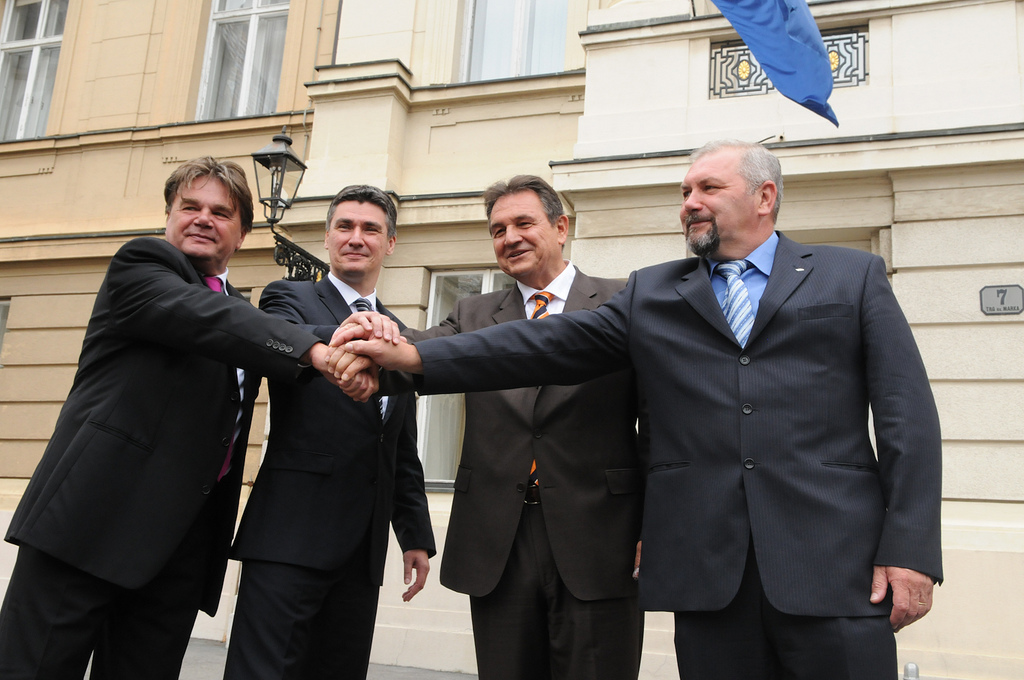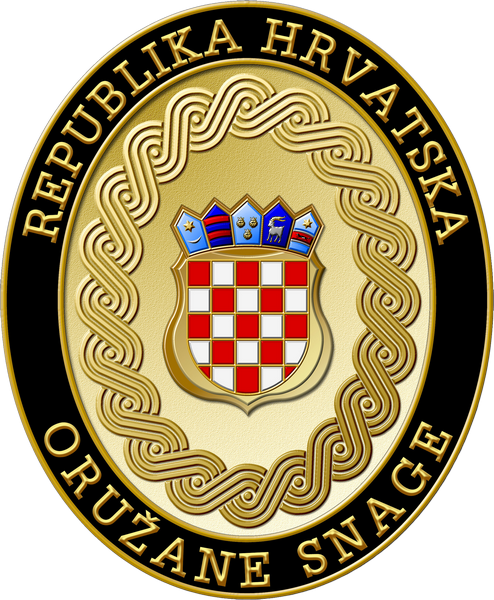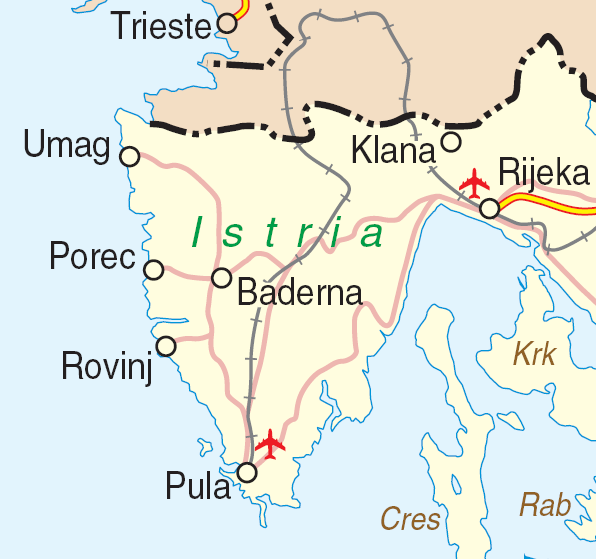|
Kukuriku Coalition
The Restart Coalition ( hr, Restart koalicija) is a centre-left political alliance in Croatia. The coalition was formed in 2010 as the Kukuriku Coalition (''Kukuriku koalicija''). This somewhat facetious name meaning 'cock-a-doodle-doo', taken from a restaurant of the same name in Kastav where the coalition leaders first convened in July 2009, became well known and was eventually taken as the coalition's official name. The coalition originally consisted of four centrist and centre-left parties in the Croatian Parliament: the Social Democratic Party of Croatia (SDP), Croatian People's Party – Liberal Democrats (HNS-LD), Croatian Party of Pensioners (HSU) and Istrian Democratic Assembly (IDS). The coalition won an absolute majority of seats in the 2011 parliamentary election and successfully formed a government led by Zoran Milanović (SDP). In the 2014–15 presidential election the coalition supported the candidacy of incumbent president Ivo Josipović. He was, however, defea ... [...More Info...] [...Related Items...] OR: [Wikipedia] [Google] [Baidu] |
Peđa Grbin
Peđa Grbin (born 24 May 1979) is a Croatian lawyer and politician serving as President of the Social Democratic Party since 2020. He was also Leader of the Opposition from 2020 until 2022, when he was replaced by Davorko Vidović, the leader of the newly-established Social Democrats. He has represented VIII electoral district in the Croatian Parliament since 2011. He also served as the Chairman of the Parliament's Committee on the Constitution, Standing Orders and Political System from 2012 until 2015. He was vice president of the SDP from 2016 to 2018 when he was suspended from that position. Early life, education and professional career Grbin attended elementary and high school in Pula, after which he enrolled in the Zagreb Faculty of Law from which he graduated in 2003. During elementary and high school days he played basketball for the local basketball team ''Gradine Pula''. After graduating, Grbin worked as a trainee in a law office and afterwards as an attorney from 2006 ... [...More Info...] [...Related Items...] OR: [Wikipedia] [Google] [Baidu] |
Predrag Matić
Predrag Fred Matić (born 2 June 1962) is a Croatian centre-left politician of the Social Democratic Party who has been serving as a Member of European Parliament since 2019. He previously served as Minister of Veterans' Affairs from 2011 to 2016, in the Cabinet of Zoran Milanović. Early life Matić was born in 1962 in Požega, Croatia. He attended University of Osijek from which he graduated with a B.A. in education. Military career During the summer of 1991, Matić served in Croatian Armed Forces as one of the defenders of Trpinjska Street in Vukovar, during the Vukovar massacre. He was arrested in November 1991 and throughout nine months was exposed to almost daily torture in Serbian concentration camps. In summer 1992 he was released, and for his bravery and heroism was awarded with numerous medals and military decorations, followed by a discharge with a rank on brigadier of Croatian Army. Political career Career in national politics After the war, Matić worked in the Cab ... [...More Info...] [...Related Items...] OR: [Wikipedia] [Google] [Baidu] |
Kastav
Kastav (Italian: Castua) is a town in Primorje-Gorski Kotar County, Croatia, built on a 365 m high hill overlooking the Kvarner Gulf in the northern part of the Adriatic coast. It is in close vicinity of Rijeka, the largest port in Croatia, and the Opatija Riviera, one of the popular tourist destinations in Croatia. Demographics The total population of Kastav is 10,265 (census 2021). The census of 2001 had recorded the following settlements:Croatian Bureau of Statistics Census 2001 http://www.dzs.hr/hrv/censuses/census2001/Popis/H01_01_03/h01_01_03_zup08-1805.html * Brnčići, population 677 * Ćikovići, population 3,089 *Kastav, population 2,037 * Rubeši, population 1,722 * Spinčići, population 876 * Trinajstići, population 490 In the 2011 census, all of the settlements were merged into a single settlement; Kastav. History The history of Kastav dates back to prehistoric times, which is borne out by numerous archaeological finds. A valuable archaeological site ... [...More Info...] [...Related Items...] OR: [Wikipedia] [Google] [Baidu] |
Political Alliance
A political group is a group consisting of political parties or legislators of aligned ideologies. A technical group is similar to a political group, but with members of differing ideologies. International terms Equivalent terms are used different countries, including: Argentina (''bloque'' and ''interbloque''), Australia (party room); Austria (''Club''); Belgium (''fractie''/''fraction''/''Fraktion''); Brazil and Portugal ("grupo parlamentar" or, informally, "bancadas"); Germany (''Fraktion''); Italy (''gruppo''), Finland (eduskuntaryhmä/''riksdagsgrupp''); the Netherlands (''fractie''); Poland (''frakcja''), Switzerland (''fraction''/''Fraktion''/''frazione''); and Romania (''grup parlamentar''). A political group in Swiss Federal Assembly is called a ''parliamentary group'', which differs from a parliamentary group in the UK. Examples Armenia In Armenia, political parties often form political groups before running in elections. Prior to the 2021 Armenian parliamentar ... [...More Info...] [...Related Items...] OR: [Wikipedia] [Google] [Baidu] |
Balkan Insight
Balkan Insight is a website of the Balkan Investigative Reporting Network (BIRN) that focuses on news, analysis, commentary and investigative reporting from southeast Europe. It is run by journalists in southeast Europe. BIRN was founded in 2004 as a network of non-governmental organisations to promote a strong, independent, and free media in Southern and Eastern Europe. Balkan Insight is the successor of BIRN's "Balkan Crisis Report" newsletter. BI reports from Albania, Bosnia and Herzegovina, Bulgaria, Croatia, Kosovo, North Macedonia, Montenegro, Moldova, Romania and Serbia.__NOTOC__ Reception ''Neue Zürcher Zeitung'' reported that Balkan Insight is a "highly regarded Internet portal" and BIRN is "valued for its independence and seriousness". In 2015, the journal ''Academicus International Scientific Journal'' reported that Balkan Insight was "the leading news site covering the Western Balkans Region", and often published opinions from international leaders. According to Rob ... [...More Info...] [...Related Items...] OR: [Wikipedia] [Google] [Baidu] |
Istria County
Istria County (; hr, Istarska županija; it, Regione istriana, "Istrian Region") is the westernmost county of Croatia which includes the biggest part of the Istrian peninsula ( out of , or 89%). Administrative centers in the county are Pazin, Pula and Poreč. Istria County is the most prominent Italian-speaking part of Croatia. History The caves near Pula (in latinium ''Pietas Julia''), ''Lim fjord'', ''Šandalja'', and ''Roumald's cave'', house Stone Age archaeological remains. Less ancient Stone Age sites, from the period between 6000 and 2000 BC can also be found in the area. More than 400 locations are classified as Bronze Age (1800–1000 BC) items. Numerous findings including weapons, tools, and jewelry) which are from the earlier iron era around the beginning of common era. The Istrian peninsula was known to Romans as the ''terra magica''. Its name is derived from the Histri, an Illyrian tribe who as accounted by the geographer Strabo lived in the region. R ... [...More Info...] [...Related Items...] OR: [Wikipedia] [Google] [Baidu] |
Međimurje County
Međimurje County (; hr, Međimurska županija ; hu, Muraköz megye) is a triangle-shaped county in the northernmost part of Croatia, roughly corresponding to the historical and geographical region of Međimurje. Despite being the smallest Croatian county by size, it is the most densely populated one (not including the City of Zagreb). The county seat is Čakovec, which is also the largest city of the county. The county borders Slovenia in the north-west and Hungary in the east, with about 30 kilometers of Slovenian territory separating it from Austria. The south-eastern corner of the county is near the town of Legrad and the confluence of the Mura into the Drava. The closest bigger cities include Varaždin, Koprivnica and Bjelovar in Croatia, Lendava, Murska Sobota and Maribor in Slovenia, as well as Nagykanizsa in Hungary and Graz in Austria. The Croatian capital of Zagreb is about 90 kilometers south-west of Čakovec. There are slopes of the Alpine foothills in the ... [...More Info...] [...Related Items...] OR: [Wikipedia] [Google] [Baidu] |
Independent (politician)
An independent or non-partisan politician is a politician not affiliated with any political party or bureaucratic association. There are numerous reasons why someone may stand for office as an independent. Some politicians have political views that do not align with the platforms of any political party, and therefore choose not to affiliate with them. Some independent politicians may be associated with a party, perhaps as former members of it, or else have views that align with it, but choose not to stand in its name, or are unable to do so because the party in question has selected another candidate. Others may belong to or support a political party at the national level but believe they should not formally represent it (and thus be subject to its policies) at another level. In running for public office, independents sometimes choose to form a party or alliance with other independents, and may formally register their party or alliance. Even where the word "independent" is used, s ... [...More Info...] [...Related Items...] OR: [Wikipedia] [Google] [Baidu] |
Primorje-Gorski Kotar County
Primorje-Gorski Kotar County ( hr, Primorsko-goranska županija, ) is a county in western Croatia that includes the Bay of Kvarner, the surrounding Northern Croatian Littoral, and the mountainous region of Gorski kotar. Its center is Rijeka. The county's population was 296,195 at the 2011 census. The county includes the island territories of Krk, Cres, Lošinj and Rab. The county is divided: * City of Rijeka (county seat) * Town of Bakar * Town of Cres * Town of Crikvenica * Town of Čabar * Town of Delnice * Town of Kastav * Town of Kraljevica * Town of Krk * Town of Mali Lošinj * Town of Novi Vinodolski * Town of Opatija * Town of Rab * Town of Vrbovsko * Municipality of Baška * Municipality of Brod Moravice * Municipality of Čavle * Municipality of Dobrinj * Municipality of Fužine * Municipality of Jelenje * Municipality of Klana * Municipality of Kostrena * Municipality of Lokve * Municipality of Lovran * Municipality of Malinska-Dubašnica * Munic ... [...More Info...] [...Related Items...] OR: [Wikipedia] [Google] [Baidu] |
Zlatko Komadina
Zlatko Komadina (born 24 October 1958) is a Croatian politician who has been prefect of Primorje-Gorski Kotar County Primorje-Gorski Kotar County ( hr, Primorsko-goranska županija, ) is a county in western Croatia that includes the Bay of Kvarner, the surrounding Northern Croatian Littoral, and the mountainous region of Gorski kotar. Its center is Rijeka. ... since 2013. Komadina resigned as Minister of Maritime Affairs, Transport and Infrastructure in the Cabinet of Zoran Milanović in April 2012, only three months into his mandate, citing health reasons. References {{DEFAULTSORT:Komadina, Zlatko Living people 1958 births Government ministers of Croatia Social Democratic Party of Croatia politicians Politicians from Rijeka Politicians from Ljubljana ... [...More Info...] [...Related Items...] OR: [Wikipedia] [Google] [Baidu] |
Krapina-Zagorje County
Krapina-Zagorje County (, hr, Krapinsko-zagorska županija) is a county in northern Croatia, bordering Slovenia. It encompasses most of the historic region called Hrvatsko Zagorje. The area contains the excavation site of a 100,000-year-old Neanderthal man in caves near the central town of Krapina. The existence of Krapina itself has been verified since 1193, and it has been a common site for castles and other country houses of Croatian, Austrian and Hungarian rulers. Other towns of the county are Zabok, Pregrada, Zlatar, Oroslavje, Donja Stubica, Klanjec. The town of Stubica features another thermal spring, the Stubičke spa. Also in the area are the medieval castles Veliki Tabor, Miljana, Bežanec, Hellenbach, Milengrad etc. The Krapina-Zagorje County borders on the Varaždin County in the northwest, Zagreb County in the southwest and southeast, and the city of Zagreb in the south. The county contains many vineyards. 15% of the year, fog significantly lowers ... [...More Info...] [...Related Items...] OR: [Wikipedia] [Google] [Baidu] |
Bjelovar-Bilogora County
Bjelovar-Bilogora County (; hr, Bjelovarsko-bilogorska županija ) is a county in central Croatia. The central town of Bjelovar was first mentioned in 1413, and it only gained importance when a new fort was built in 1756 to defend against the Ottoman invasions. The town was pronounced a free royal town in 1874. The other part of the county name is for the hill of Bilogora that stretches along the northern edge of the county. Other towns in the county are Daruvar, Garešnica, Čazma and Grubišno Polje. The Bjelovar-Bilogora County borders on the Koprivnica-Križevci County in the north, Virovitica-Podravina County in the northeast, Požega-Slavonia County in the southeast, Sisak-Moslavina County in the southwest and Zagreb County in the west. Alongside the City of Zagreb and Požega-Slavonia County, it is the only Croatian county that does not border another nation. Administrative division Bjelovar-Bilogora County is further divided into 5 towns and 18 municipaliti ... [...More Info...] [...Related Items...] OR: [Wikipedia] [Google] [Baidu] |







